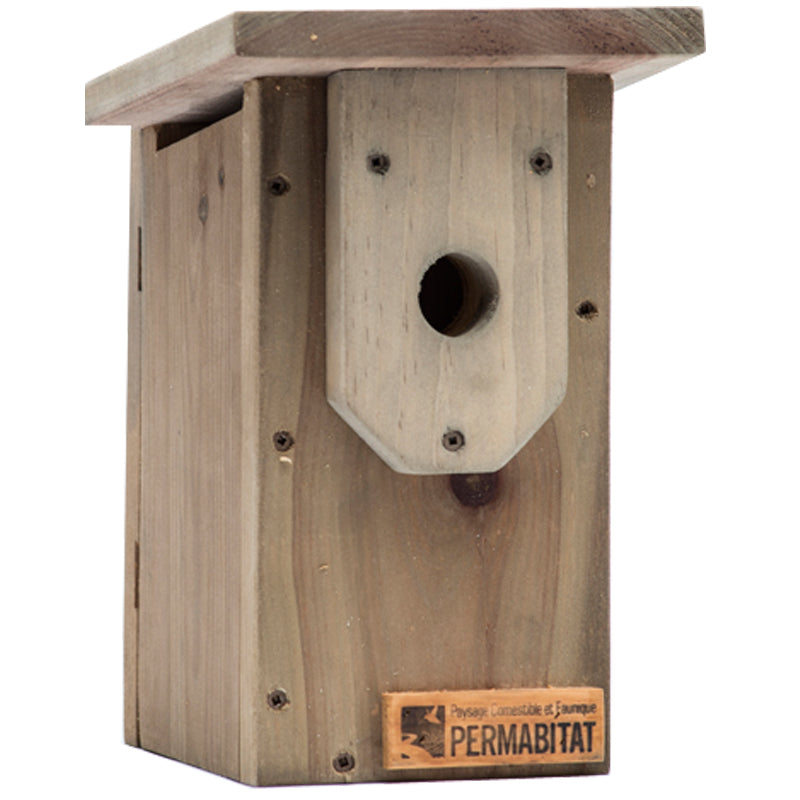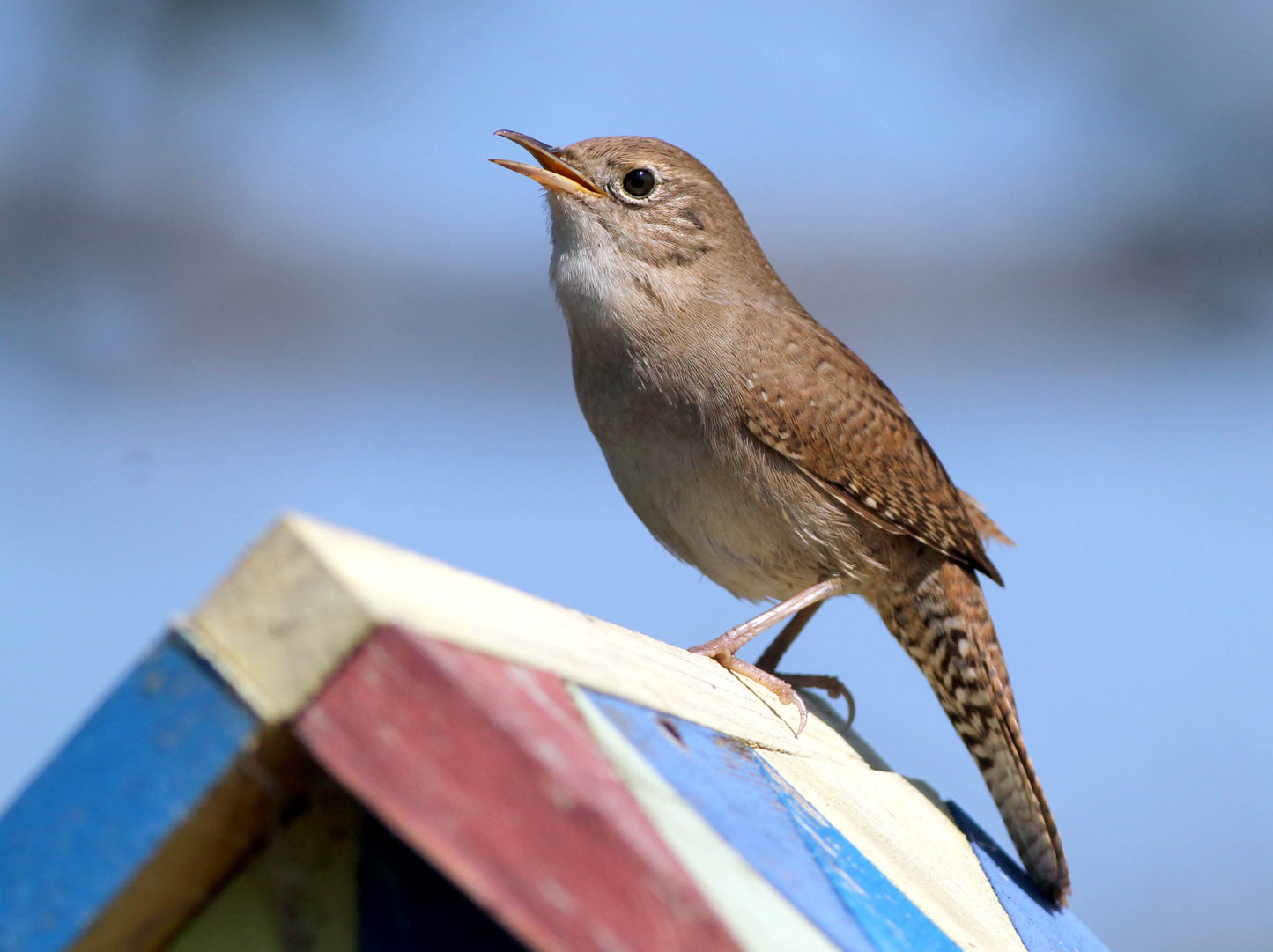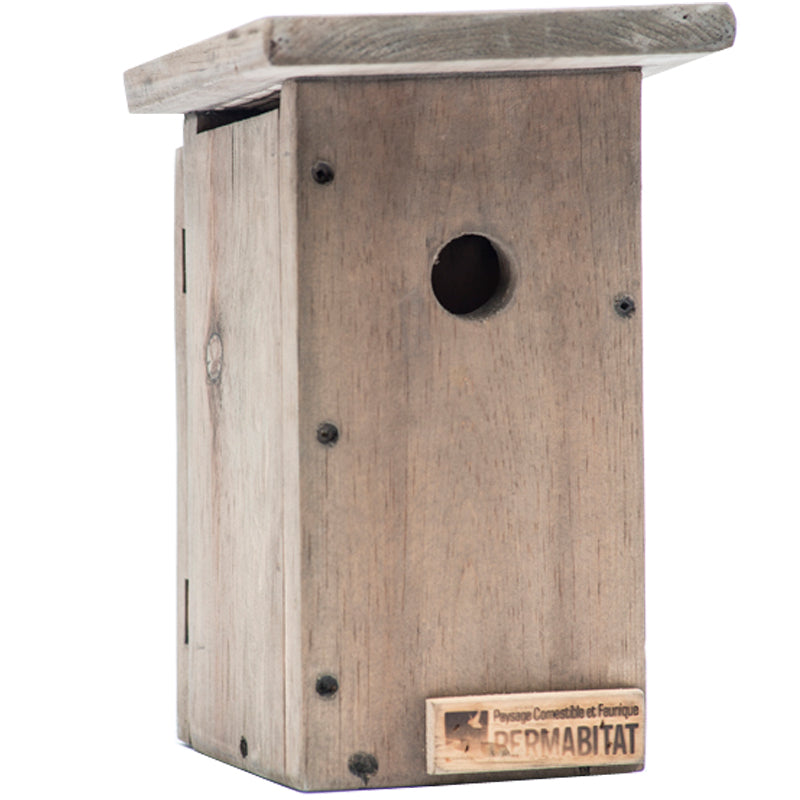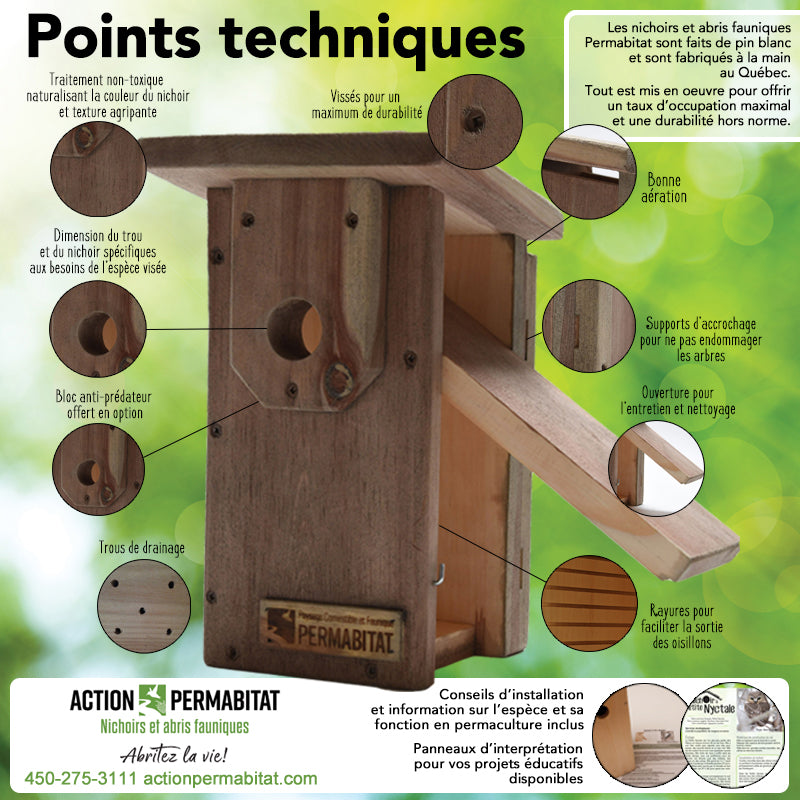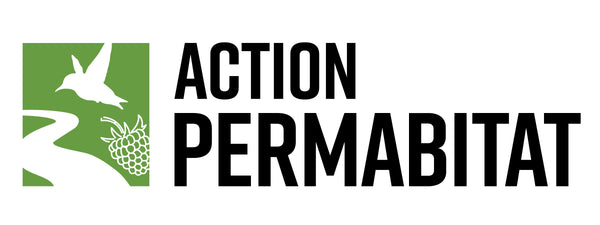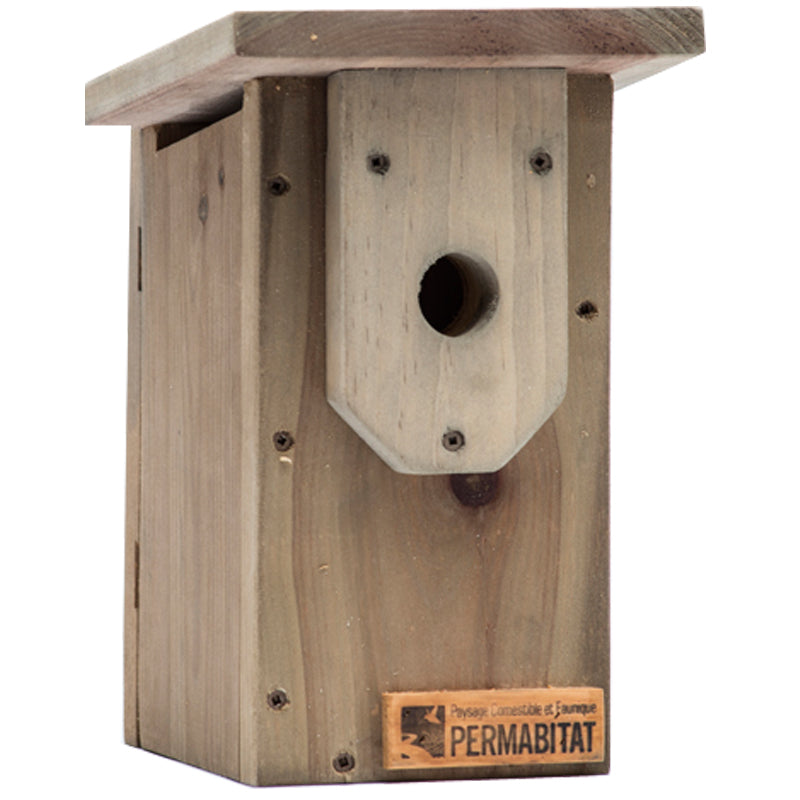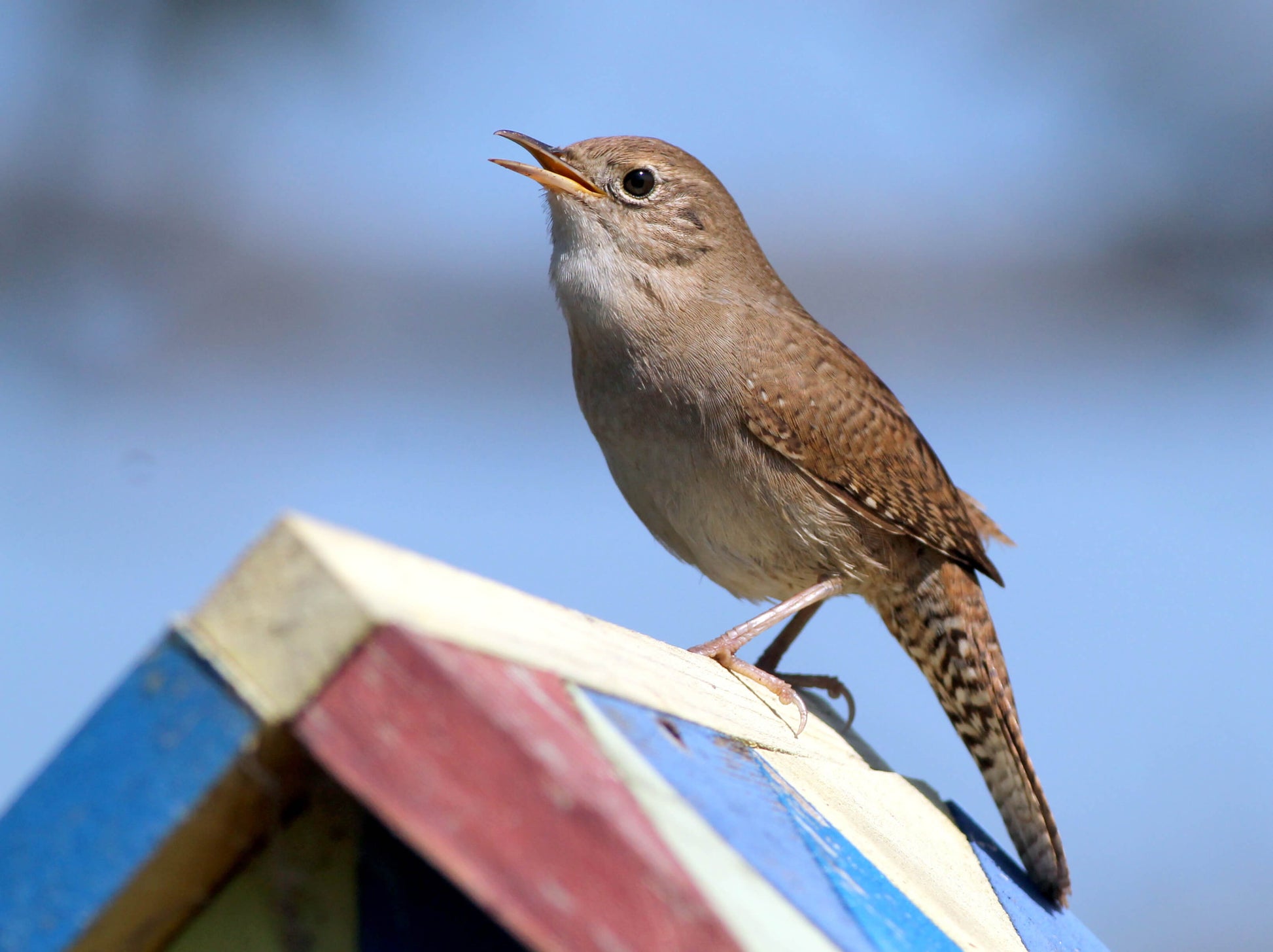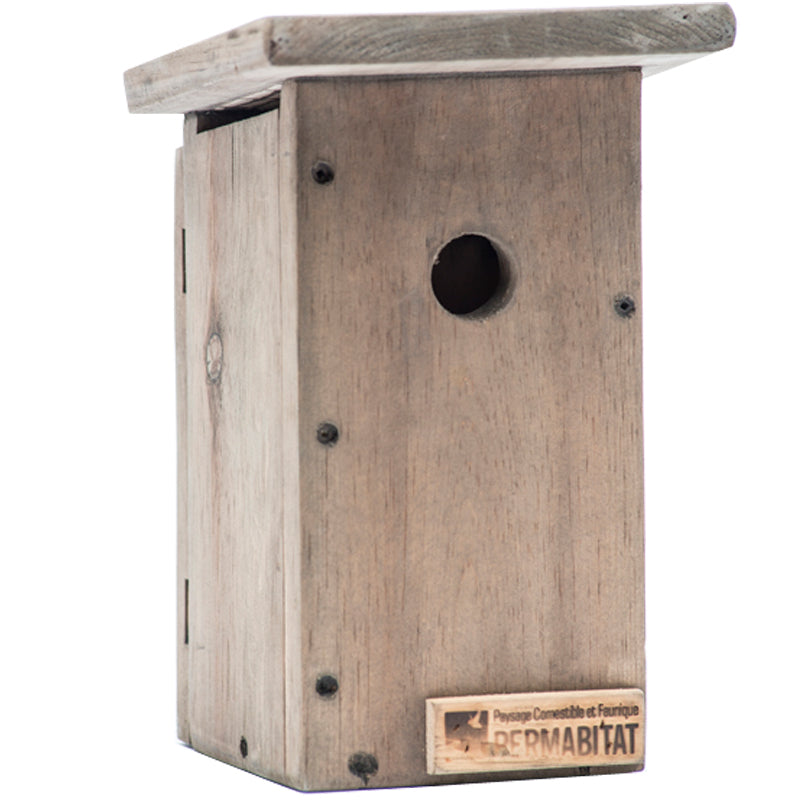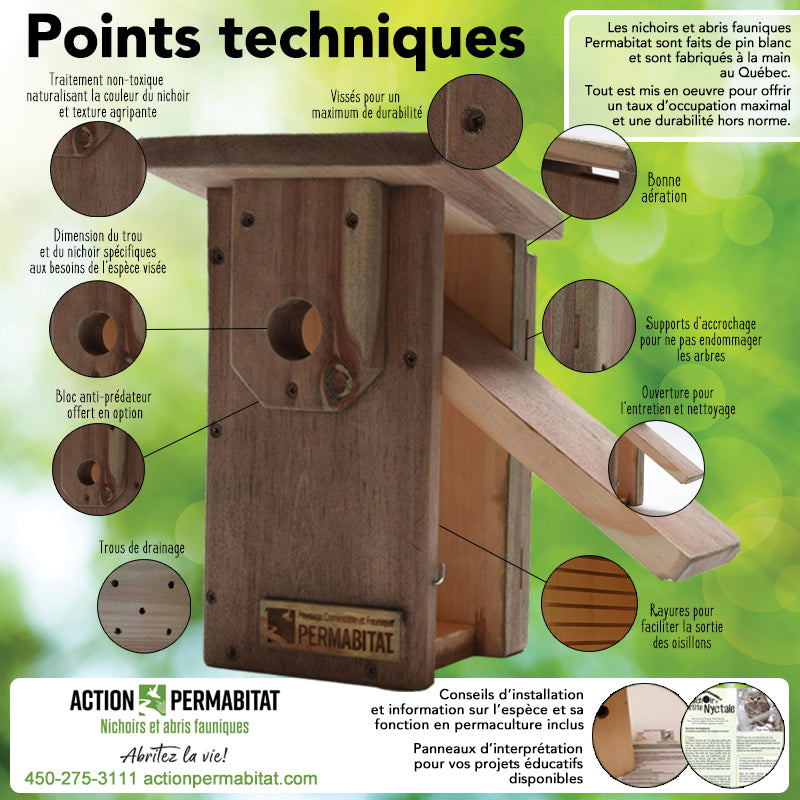1
/
of
3
House Wren Nest Box
House Wren Nest Box
Regular price
$49.99
Regular price
$59.99
Sale price
$49.99
Unit price
/
per
Shipping calculated at checkout.
Couldn't load pickup availability
HOUSE WREN
Troglodytes aedon
This small brown-gray migratory bird with a pale belly is very vocal and not very shy. It nests from May to August in edges, thickets and thickets where it can find cavities, but it can also nest in all kinds of artificial cavities that it finds near homes, such as a boot, a tin can, a boiler, etc. It lays 6 to 8 eggs which are incubated by the female for 13 days. The chicks will make their first flight approximately 15 days after hatching.
The house wren mainly eats insects, but also snails. It forms mostly monogamous couples, but the male can sometimes have two partners at the same time. From the start of the breeding season, the male builds several nests in his territory which the female will inspect before making her choice. This bird is very competitive and can destroy eggs and chicks in other nests.
HABITAT
City, countryside, forest and body of water.
ECOLOGICAL SERVICES OF THE SPECIES
Eats insects on trees and on the ground.
FACILITY
Urban, peri-urban and rural areas.
On the edge of forests, small woods and thickets, bushes, groves and orchards.
Near suburban or country homes offering a combination of trees and open space.
Install the nest box at the edge of a wooded area.
Orientation of the hole: South, South-East.
Height: 1.8 to 3 meters from the ground.
Install the nest box at the edge of a wooded area.
Orientation of the hole: South, South-East.
Height: 1.8 to 3 meters from the ground.
PRECAUTIONS
_ Carry out maintenance every fall to avoid pests and diseases
_ Do not drive screws or drive nails directly into trees.
